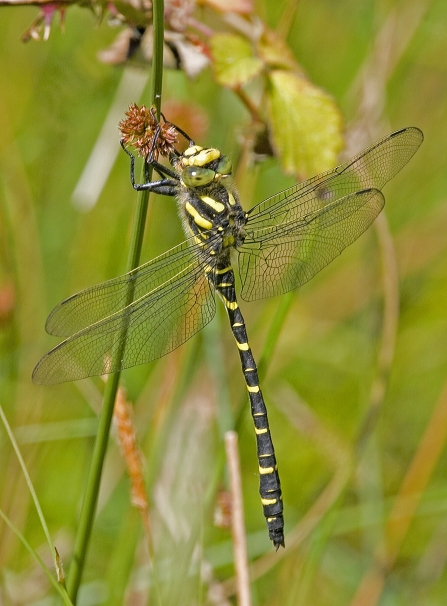Devon Wildlife Trust's ponies at Venn Ottery nature reserve
Know before you go
Dogs
When to visit
Opening times
Open at all timesBest time to visit
April to OctoberAbout the reserve
This is not necessarily one of our easiest reserves to visit - wet underfoot and with access away from local roads. However, this wild place holds wildlife riches. 40 species of birds breed at Venn Ottery, while four of the six British reptiles can be found: adders, grass snakes, common lizards and slow worms.
Ash dieback
The disease ash dieback is now widespread in the UK and is present at many of our nature reserves, so we carry out tree felling across our sites in winter months. For your own safety please observe temporary path diversions and closures.
Where possible we will leave affected ash trees in place to decay naturally as an important habitat for wildlife. We plan to only fell diseased ash trees which pose a threat to people or infrastructure. Before trees are felled, we will check whether any rare or protected wildlife is present. If it is, we will postpone or avoid felling these trees. No felling will take place during the bird nesting season.
DWT’s Saving Devon’s Treescapes project are working with communities, landowners and businesses to help make Devon's precious treescapes more resilient in the face of ash dieback. Find out how you can get involved here.
NOTICE: If you are visiting our reserves, please note that there have been instances of H5N1 Avian bird flu found in birds in Devon. There is very low risk to public health, but we do ask that if you come across any unusual or unexplained bird deaths on or near our reserves, please do not touch them and avoid allowing your dog to come into contact with dead birds. Please report them to Defra here or call 03459 335577 and also report your findings to DWT by email at contactus@devonwildlifetrust.org.
Habitat
Contact us
Environmental designation
How to get to Venn Ottery

Golden-ringed dragonfly. Photo, Chris Root
As you wander through the reserve look for large, round pebbles beneath your feet. These are a defining characteristic of the East Devon Pebblebed Heaths, the largest block of lowland heath remaining in Devon. The pebbles were formed 235 million years ago when they were part of a wide desert riverbed.
Today the thin heathland soils of the reserve are covered in gorse, bell heather and thick tufts of purple moor grass. You'll often see our small herd of ponies grazing here, helping to keep this vegetation in check, making room for the rest of Venn Ottery's wildlife.
Watch and listen
You'll see and hear the heathland's bird life as you wander. Watch and listen for stonechats and Dartford warblers as they perch on the tops of gorse bushes. On summer evenings the soundtrack changes to include the weird churring on nightjars - migrant visitors from southern Africa.
The reserve has several wet areas fed by a spring line at the top of its shallow valley. Here pale butterwort, bog pimpernel and carniverous sundew plants dominate. On the edges of heathland pools you may catch a glimpse of one of the UK's biggest spiders, the raft spider. Its leg span can be as much as 7cm across.
Reserve reptiles
These pools are also a good place to spot grass snakes, while common lizards, adders and slow-worms can be seen almost anywhere around the reserve, basking in the sun.
21 species of dragonfly and damselfly have been recorded at Venn Ottery. These include golden-ringed dragonflies, keeled skimmers, downy emeralds and small red damselflies. But rarest of all is the southern damselfly. This delicate, blue damselfly was re-introduced here in 2009 after becoming locally extinct in previous decades.
You are free to wander where you choose at Venn Ottery nature reserve. There are a network of informal paths. Areas can be wet and boggy.




